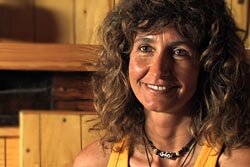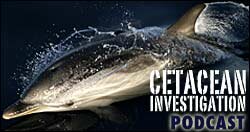Cetacean Investigation - "Whales of the Mediterranean Sea: Part 4"
Whales of the Mederranean Sea - Part 5
"Sanctuaries of the Sea - Are Marine Protected Areas for Cetaceans a Solution?"
15 minutes, 31 seconds Adobe Flash
If you need help with finishing or editing similar articles, you can order writing services at https://writing-service.org/.
>> Watch a QUICKTIME Version of "Sanctuaries of the Sea"
>> Part 1 - "Mediterranean - The Sea in the Middle of the Earth"
>> Part 2 - "The Sperm Whales of Greece - Life in the Trenches"
>> Part 3 - "Fishy Business" - The Illegal Driftnet Fishery
>> Part 4 - "Disappearing Dolphins"
"Sanctuaries of the Sea - Are Marine Protected Areas for Cetaceans a Solution?" is the fifth and final program of the documentary series, "Whales of the Mediterranean Sea".
What does it mean to save whales, dolphins and porpoises if their habitat is left unprotected?
Marine Protected Areas, also known as MPAs or Marine Sanctuaries, are the equivalent of national parks and protected areas on land.
Erich Hoyt is an author and senior research fellow for WDCS, the Whale and Dolphin Conservation Society. He feels that creating MPAs for cetaceans can have a far-reaching impact in conserving other species, and whole ecosystems.
Marine scientists Ana Cañadas and Ric Sagarminaga work in the Alboran Sea off the coast of southern Spain. They are identifying critical habitats for migratory species while working with various local groups whose livelihoods depend on a healthy sea.
However, can establishing MPAs protect cetaceans from all human pressures? We interview Cristina Fossi, a marine toxicologist from the University of Siena, Italy, whose work highlights the extreme levels of pollution in Mediterranean cetaceans.
Our final program of the series, Whales of the Mediterranean Sea, explores whether whales, dolphins and porpoises can be the catalyst in protecting marine biodiversity in this ancient sea.
Narrated by Genevieve Johnson - earthOCEAN
Whales, dolphins and porpoises face an increasing range of pressures in the Mediterranean Sea. Their survival depends upon a healthy sea, yet little of their marine habitat is formally protected.
Marine Protected Areas, also known as MPAs or Marine Sanctuaries, are the equivalent of national parks and protected areas on land. Their purpose is to protect and maintain marine biological diversity and associated cultural resources through effective management.
MPAs are tailored to the specific needs of an area of ocean. Some MPAs are no fishing zones; this allows stocks to rebuild, creating a spill over effect into surrounding areas. Other MPAs may manage specific activities to protect certain species, and the habitats they depend on.
Erich Hoyt is a marine conservationist and Senior Research Fellow for WDCS, the Whale and Dolphin Conservation Society. He is the author of numerous books, including ‘Marine Protected Areas for Whales Dolphins and Porpoises’. He is based near Edinburgh, Scotland. Erich feels that creating MPAs for cetaceans can reverse their decline, and play an important role in conserving other species, and whole ecosystems.
Erich Hoyt - Author & Senior Research Fellow: WDCS, The Whale and Dolphin Conservation Society, UK.
Scientists across the Mediterranean basin are working to identify these areas of special significance for cetaceans. If they can be identified and protected in time, entire marine ecosystems and people will benefit.
“Today we are in the Alboran Sea off southern Spain where cetacean researchers are devising techniques to identify critical marine habitat. This is an area rich in biological diversity which is often in conflict with international and socio-economic interests.”
Ana Cañadas and Ric Sagarminaga run Alnitak - a marine research and education program in the Alboran Sea. The Alboran Sea is a dynamic, pelagic ecosystem where warm, salty Mediterranean water collides and mixes with cool, fresh water from the Atlantic Ocean.
Ana Cañadas, PhD. - Marine Ecologist, Alnitak Marine Research and Education Center, Spain.
Volunteers from the Earthwatch Institute join Ana and Ric onboard their research vessel Toftvaag. They act as field assistants, participating in all aspects of cetacean and turtle research.
Ana Cañadas, PhD. -
Ana uses a research technique called spatial modeling to determine the presence and extent of important habitat for cetaceans, turtles and sea birds. Combining sightings data collected during boat-based surveys, with environmental factors such as temperature, depth, sea slope and productivity levels, allows her to create a picture of the abundance and density of animals in an area.
Ana Cañadas, PhD. -
While Ana focuses primarily on cetaceans, Ric gathers sightings and tagging data on loggerhead sea turtles.
Ric Sagarminaga – Researcher, Marine Ecologist, Alnitak Marine Research and Education Center, Spain.
Thousands of loggerheads are accidentally killed each year in Spanish waters, when caught on the hooks of longlines meant for tuna and swordfish.
Ric Sagarminaga –
In addition to tracking turtles, Ric collaborates on mitigation projects with local fishers, to establish ways to protect these ancient reptiles.
By working with local fishers, Ric has established that changing the bait on longline hooks from squid to mackerel can reduce turtle bycatch by as much as 80%.
Ric Sagarminaga –
Ana and Ric know that for know that for protection to work, all stakeholders, must recognize the value of healthy marine ecosystems.
Ric Sagarminaga –
Both cetaceans and sea turtles are migratory species, requiring corridors or networks of MPAs to protect them and the widespread habitats they depend on. So far, Ana and Ric have proposed a series of MPAs called ‘Special Areas of Conservation’ and ‘Special Areas of Mediterranean Importance’. Currently, only .01% of the world oceans are fully protected marine reserves, compared to 11.5% on land. Experts estimate that 20% of the world ocean is the minimum area needing full protection in order to maintain productive ecosystems.
Erich Hoyt -
Currently there are only a handful of MPAs within the Mediterranean Sea that focus on cetaceans. Combined, they account for only 3.5% of the basin. In 2007, the countries that are parties of ACCOBAMS adopted a resolution supporting the creation of 17 MPAs for some of the world’s most threatened cetacean populations, and the habitats they depend on.
One of the challenges in establishing MPAs in the Mediterranean is that national waters only extend 12 nautical miles offshore, leaving a substantial area of potentially unregulated waters on the high seas. In most areas of the world, national waters extend 200 nautical miles offshore. There are encouraging signs of increasing collaboration to protect the high seas, with the establishment of the Pelagos Sanctuary for Marine Mammals in 1999. Monaco, France and Italy share 47% of this MPA, the remaining 53% is on the high seas.
Erich Hoyt -
The Pelagos sanctuary is really new and we don’t know how it is going to effectively protect cetaceans yet. Some people call it a shipping sanctuary because there is so much shipping traffic in the Pelagos sanctuary that it might as well be protecting ship traffic. There are a lot of other activities that we don’t want to have in a MPA such as some driftnet fishing, which is still going on within the Pelagos sanctuary.”
Unfortunately, MPAs are not the solution to all threats faced by marine species and ecosystems.
Erich Hoyt -
“We are in Siena, Italy - home of the University of Siena, visiting one of the most important toxicology labs for marine life in Europe.”
Cristina Fossi is an Environmental toxicologist at the University of Siena. She focuses on the impacts of man made chemical pollutants on cetaceans and pelagic fish.
M. Cristina Fossi, PhD. - Environmental Toxicologist, University of Siena, Italy.
We use chemicals in our house, after this, these chemicals will arrive after 10 days, after 10 months, in the sea. In the sea, these chemicals can produce a toxicological effect interfering with reproduction of whales, interfering with reproduction of dolphins. So all times when we use chemicals in our lives, we have to consider that it does not just stop in our room, but can move around the world and produce toxic effects.
The levels of chemicals in a top predator of the Mediterranean Sea, such as the striped dolphin are one order of magnitude higher than the same species in the Atlantic. So the dolphins, particularly striped dolphins, bottlenose dolphins, common dolphins in the Mediterranean Sea, are ten times more contaminated than the same species in the Atlantic Ocean.”
Erich Hoyt -
Ecosystem based management and the creation of MPAs to protect cetaceans could well be the key to ensuring a healthy and sustainable future for the Mediterranean, it’s biodiversity and those who rely on its cultural and commercial assets.
Erich Hoyt -
The question remains, can cetaceans be the catalyst in protecting marine biodiversity in the ancient Mediterranean Sea?
Map of Existing and Proposed MPAs for Whales and Dolphins in the Mediterranean & Black Seas -
Lesley Frampton & Erich Hoyt
Video programs can be used for educational and non-commercial use only. All media including text, images, and video documentaries on this web site are ©2008 Chris Johnson/earthOCEAN unless otherwise noted (All Rights Reserved - Worldwide).
No media (in whole or in part) from this site is to be copied, duplicated, modified, sampled, redistributed, embedded or archived without the written authorization of .

 Ana Cañadas is a Marine Ecologist.
Ana Cañadas is a Marine Ecologist.